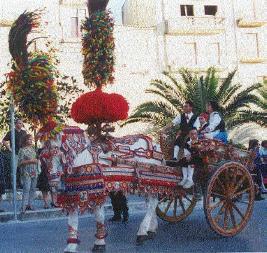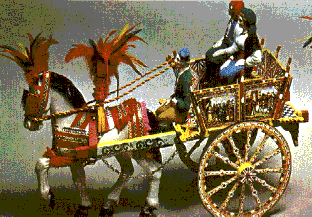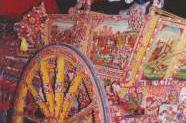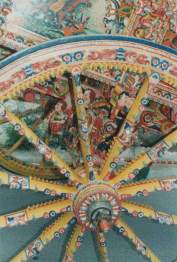- IL CARRETTO SICILIANO
- ® www.lentinionline.it
- Il simbolo della Sicilia e della sua tradizione. Un'esplosione di colori. Nelle sponde, nelle ruote, nella cassa, in ogni singolo pezzo che lo compone troviamo i colori del meraviglioso SOLE Siciliano, delle angurie di fuoco, dello zolfo, delle arance e dei limoni, del cielo e del mare, della lava dell'Etna e dei fichidindia. Sulle cui fiancate si dipingevano le gesta dei paladini, la vita dei Santi e imprese eroiche di personaggi storici. Nel suo complesso rappresenta una sintesi delle civiltà mediterranee che posero piede nell'isola, il loro concentrato: i colori Arabi, gli arabeschi Turco-Bizantini, i costumi Greci, le "cianciane", le "frange" Spagnole. La sua origine non è esattamente accertata, all’inizio dell’800 era un mezzo di trasporto, poi si assolse anche a funzioni di rappresentanza e di prestigio del proprietario. I carretti di Aci Sant’Antonio (CT), di Bagheria (PA), di Vittoria (RG) lasciano dedurre influenze di arte popolare che arriva fino agli Arabi. I carri tuttora esistenti, riccamente addobbati, vengono portati in giro per le grandi feste religiose e manifestazioni. Osservandolo da vicino sembra di guardare e di sentire tutta la Sicilia con i panorami aspri, i suoi profumi misteriosi, le sue lontananze.Il suo modellino in scala non manca mai nella casa degli emigranti, di coloro che il destino ha spinto lontano dalla loro terra.





 ®
®